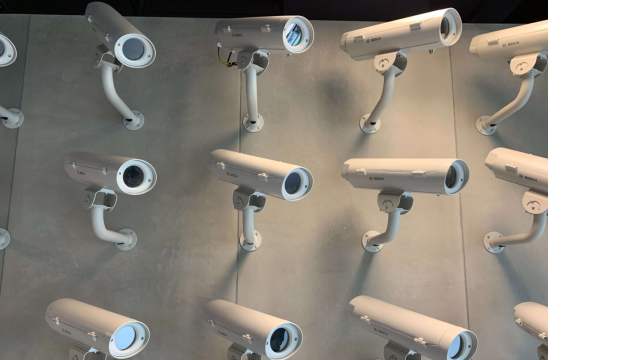CCTV security cameras, otherwise known as closed-circuit television, are a system of video feeds within a closed system available only to authorized users. Since their origin in the mid-20th century, CCTV cameras have evolved to offer high frame rates, allowing a user to follow the movement of someone on camera. Additionally, high resolution allows for full-color feeds and incredibly detailed pictures as well as night vision capabilities. There are a range of CCTV camera types and specifications on the market.
How to Know What to Look For in a CCTV Camera #
Deciding which surveillance cameras will work best in a particular environment is easiest when the advantages and disadvantages of each camera are known. When comparing camera types and prices, keep the following 3 factors in mind.
- Image clarity and quality- Fit cameras to security needs. Cheaper options might be the right choice if high-resolution footage isn’t an important factor for a user. Similarly, if clarity is necessary, many cameras are fitted with HD capabilities and night vision.
- Field of vision- The area being monitored will likely be one of the easiest ways to determine which camera will best suit that environment. A narrow or wide field of vision is one of the first questions a user should consider.
- Usage- Will the camera be used indoors or outdoors? Should it act as a visual deterrent or be discreet? What are the needed capabilities due to the area’s light conditions? These are all things to keep in mind when selecting the right camera.
1) Bullet Cameras #
Bullet cameras are one of the two most common CCTV camera types. They have a long cylindrical shape, giving them their name and a distinctive look. This look is recognizable to nearly everyone and thus acts as a deterrent to unwanted individuals. If security cameras are visible, the hope is criminals and intruders go elsewhere instead. That being said, bullet cameras are more prone to vandalism because of their obvious look. Additionally, the shape of the camera is ideal for focusing on a fixed field, such as an entry or exit, but requires multiple cameras if a user needs to see multiple fixed views. Bullet cameras are easily mountable and can work indoors or outdoors. They feature a small lip on the end of the camera that adds weather protection and reduces glare.
2) Dome Cameras #
The second most common CCTV camera type is the dome camera. Similar to the bullet camera, dome cameras have a specific shape but are less noticeable at first. Typically the cameras are mounted on ceilings, thus making them an indoor camera, but they can be used outside if needed and mounted on a wall. Most cameras have night vision and heat and motion-sensing technology, allowing for effective 24/7 surveillance. The dome camera has a wider viewing angle than the bullet camera and tends to be more resilient toward tampering and vandalism.
3) IP Cameras #
Among IP security options, there are wired, wireless, and wire-free cameras. Wireless cameras collect and send data over a wireless network. These security cameras connect to a user’s home wifi network and allow that user to see the footage from anywhere. A common misconception is that wireless means the camera is wire-free. This is not the case as wireless cameras may still need a power cord. Wired security cameras are connected to a recorder directly which then connects to a router and the internet. Finally, wire-free cameras are completely cable-free and battery-powered. Although battery replacements are necessary, these are the easiest option to install and all of the recorded footage is stored in the cloud.
4) PTZ Camera (Pan-Tilt-Zoom) #
PTZ cameras, short for pan, tilt, zoom, work well for monitoring large spaces. The camera lens moves anywhere from no pan/tilt to a 360-degree movement and 180-degree tilt. The advantage of PTZ cameras is that only one is necessary to monitor a room, as opposed to several individual fixed cameras. The camera often has preset capabilities so that a user can easily aim the camera towards whatever location they would like, as well as zoom in and out.
Indoor and Outdoor CCTV Cameras #
Most security cameras can be used both indoors and outdoors. They typically have the same features like night vision or remote viewing, but they differ in durability. Outdoor cameras should be weather resistant and in some cases, completely waterproof. Cameras with an IP66 or IP67 weather resistance rating are the most durable.
Bullet cameras tend to be among the most popular outdoor options because their design allows for minimum glare. In terms of detection, it is better to have a camera equipped with infrared detection as opposed to motion detection. This will provide more accurate and less frequent alerts because oftentimes the motion detection is set off by movements such as a tree blowing or an animal running by.
If you're looking for an overview of the best security camera brands, check out our resource and, in case you're interested in learning more about the benefits of integrating security cameras with your access control system, check our solutions page.




